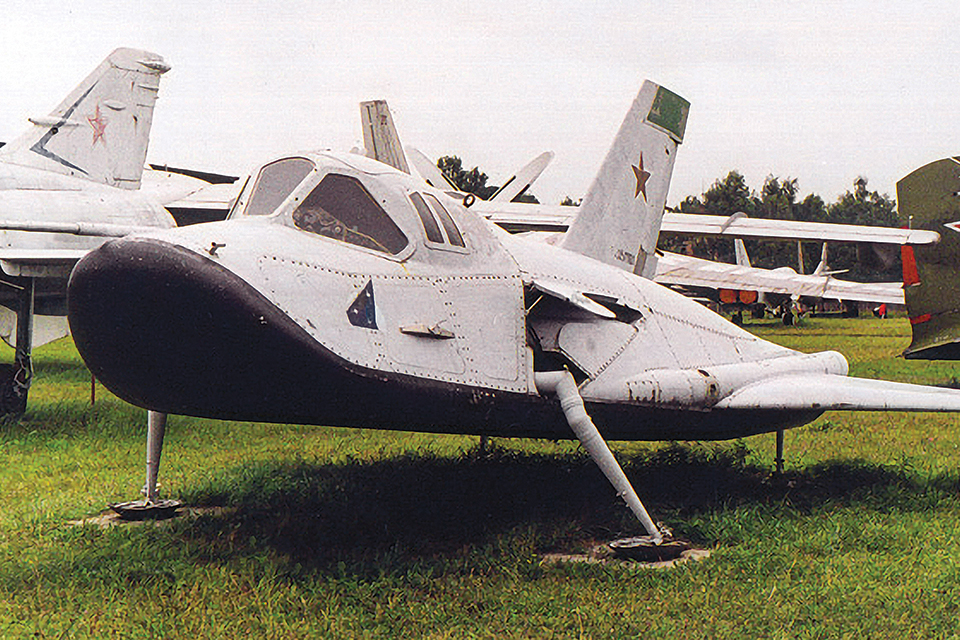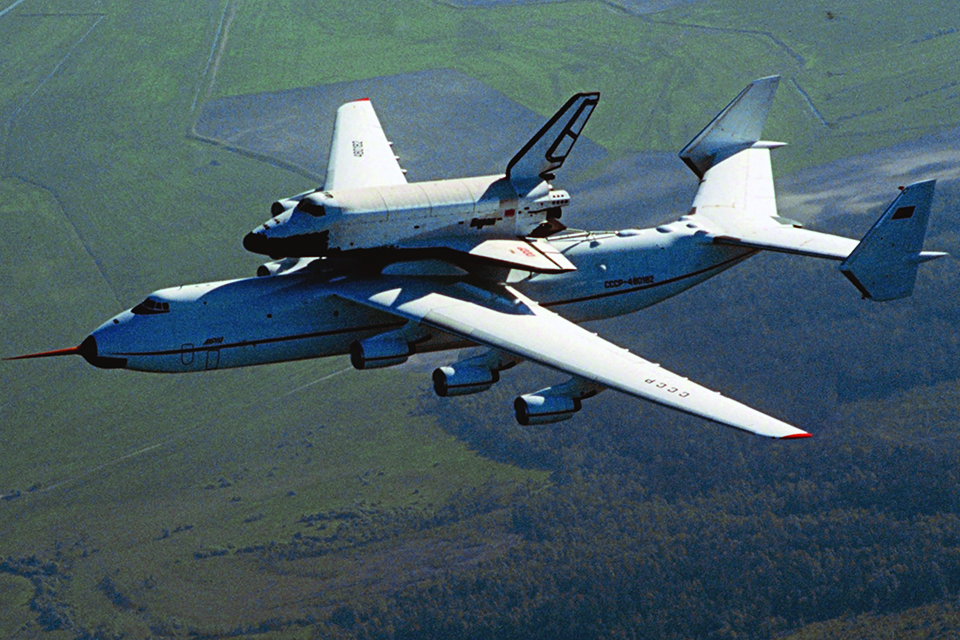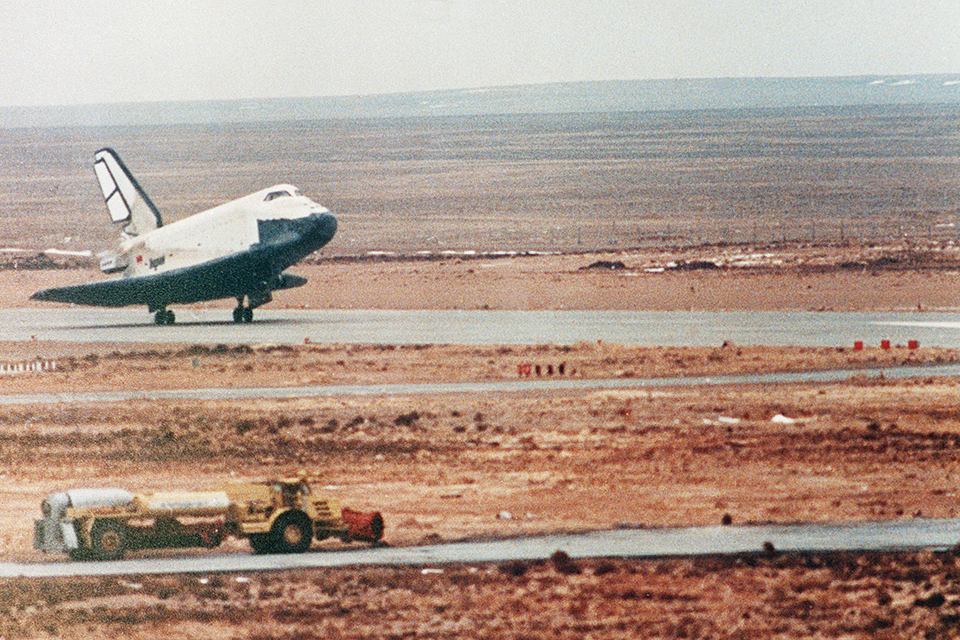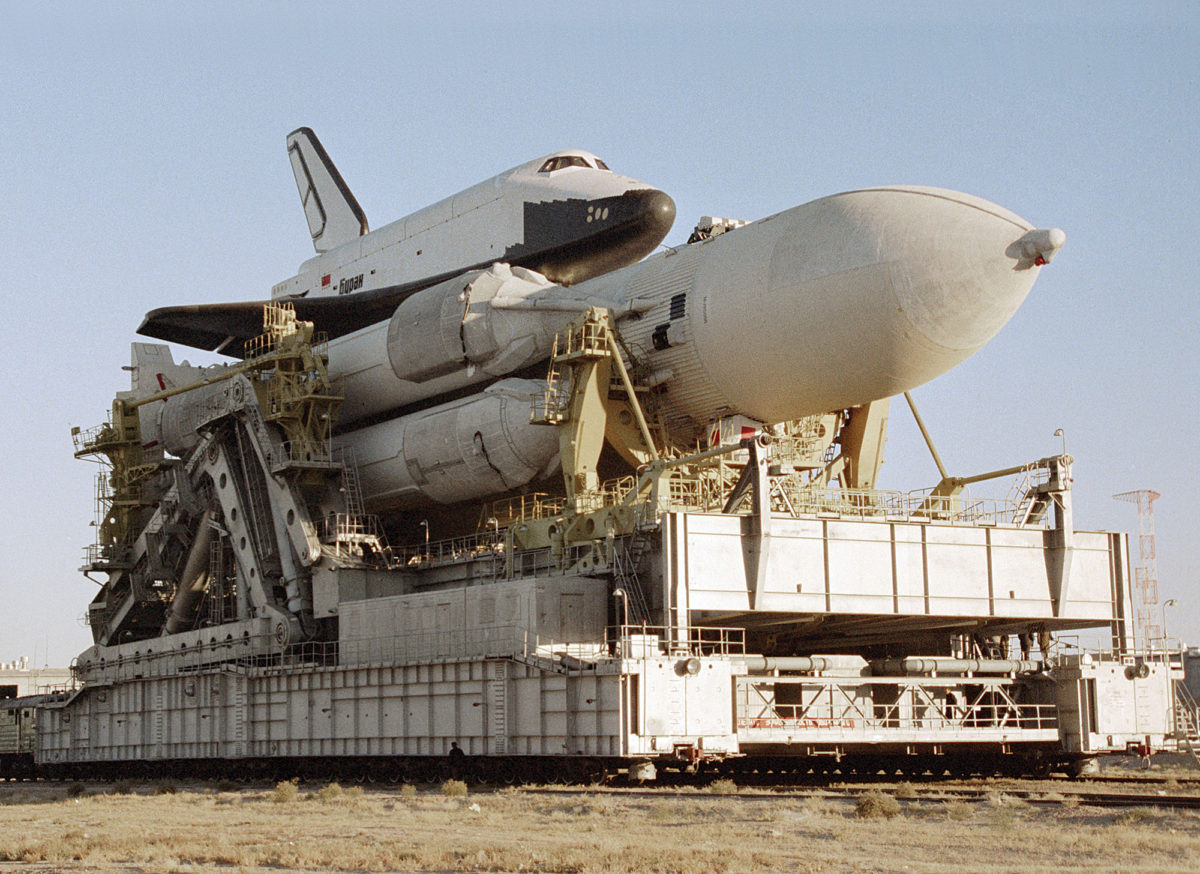The Buran spaceplane never lived up to its potential after it was overcome by political and economic forces beyond its designers’ control.
NASA’s space shuttle program was famous worldwide for its triumphs and tragedies. From 1981 to 2011, the space shuttles Columbia, Discovery, Endeavour, Atlantis and Challenger lofted more than 800 astronauts and countless payloads into orbit over the course of 135 flights. But the program was also notable for the catastrophic loss of two shuttles and their crews. Many aerospace enthusiasts are unaware that there was a second space shuttle program in operation for much of the same time period—the Soviet shuttle, known as Buran.
Buran (“blizzard” or “snowstorm”) is now all but forgotten in the West but was a centerpiece of Soviet space efforts from the 1970s through the early 1990s. Officially designated the VKK (“air space ship”) Space Orbiter Program, the Soviet effort was conceived as a counterpoint and competitor to NASA’s space shuttle. While the two shuttles shared many similarities, they were fundamentally different vehicles.
NASA’s shuttles were primarily designed for civilian space applications, only carrying payloads for the Department of Defense on a small number of flights. Nevertheless, the Soviets were convinced that a hidden military agenda lay behind the American program. The NASA shuttles’ large payload capacity worried Soviet engineers, who were concerned the cargo bay could be used to carry weapons. The Soviets were specifically worried about space-based lasers that could potentially disable their ICBMs and satellites. As such, Buran’s designers had clear military intentions in developing their own shuttle.

The Buran program was formally authorized in February 1976. Special cosmonaut teams were selected and began training. Initial plans called for development of the MiG-105 (which was similar to the Boeing X-20 Dyna-Soar) into a full-fledged spaceplane. Scaled-down versions of the MiG-105 and its successor, the BOR unmanned orbital rocketplane, were test launched. One BOR was recovered at sea and an image of the secret craft was even published in National Geographic.
Despite these efforts, the Soviets ultimately decided that their spaceplane would closely mimic the U.S. shuttle. Espionage was therefore employed to obtain as much technical information about the American space shuttle program as possible. While most of NASA’s developmental data was unclassified, the sheer amount of information to sift through was daunting. The Soviets relied on the Military-Industrial Commission (VPK) and the KGB to obtain the sensitive information and get it into the hands of their aerospace scientists. In the end, they were able to obtain enormous quantities of information from NASA-funded studies and by accessing databases at U.S. universities such as Stanford, Princeton, Caltech and MIT, all of which had teams engaged in shuttle research. This data grab saved the Soviets years of development and millions in research funding.
NASA used the shuttle Enterprise (which never flew in space) as a testbed for piloted aerodynamic studies, culminating in the so-called Approach and Landing Test (ALT) program. The ALT program studied the shuttle when it was mated to a Boeing 747, in free flight and during landing. Analogously, the Soviet shuttle could be carried on the back of an enormous Antonov An-225 Mriya aircraft. The Soviet aerodynamic testbed, known as OK-GLI (Buran Aerodynamic Analogue), was used for free flights as well as landings, similar to those carried out by Enterprise during the ALT. Unlike its American counterpart, however, the OK-GLI had four turbofan engines and could take off and fly under its own power.

When finally delivered in 1988, the flight article Buran (OK-1K) was eerily similar in appearance to the U.S. shuttle, but had many key differences. NASA shuttles carried seven or eight astronauts, whereas Buran could accommodate a crew of 10. Most strikingly, Buran was designed to fly unmanned if necessary, a feat the U.S. shuttles could not match. And, unlike the American shuttle, Buran had no engines to assist with its launch. The spaceplane was carried into low earth orbit by a massive Energia rocket capable of lifting almost a quarter-million pounds.
Buran flew its one and only mission on November 15, 1988. The Soviet shuttle was launched from the Baikonur Cosmodrome by an Energia rocket without any cosmonauts on board for a fully automated flight. Buran orbited the earth twice and made a precise runway landing at its launch site. The flight was an unqualified success, but it would be the high point of the program.

The subsequent breakup and dissolution of the Soviet Union in 1991 led to funding troubles for Buran. Two sister orbiters were never completed. In 1993 Russian president Boris Yeltsin cancelled the program. Buran, designed in part to dock with the Soviet Mir space station, never got a chance to perform that mission. Mir was ultimately visited by Atlantis.
After the fall of the Soviet Union, the flown Buran and other key components of the program came to what can only be deemed ignominious ends. OK-1K, along with an Energia rocket, was destroyed and eight workers were killed on May 12, 2002, when the roof of its neglected hangar collapsed following a severe rainstorm. The incomplete sister ships were displayed around the former Soviet Union and subsequently mothballed. Other test articles have been variously stored in hangars, displayed in museums, left outdoors exposed to the elements, converted to attractions (including a restaurant at an amusement park) or, in the case of an elaborate, large-scale wooden test model for wind tunnel studies, simply scrapped. Verified hardware from the Soviet shuttle program, most notably Buran thermal tiles, can be purchased on eBay.
In retrospect, the Buran program seems to have been an incredible technical achievement that came to fruition at the wrong time. The Soviets had the know-how and expertise to build and operate such a marvel, but the subsequent end of the U.S.S.R. ensured that the program would never live up to its potential, unlike its American counterpart.
This article appeared in the November 2020 issue of Aviation History. To subscribe, click here!





